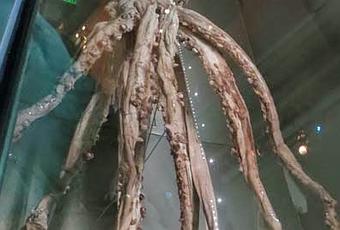

The Dutch gave the land, then outside the city limits (Wall Street) to Angolan residents of the colony, intending for their plots and settlement to serve as a buffer zone to Native Americans outside the settlement. By the mid-17th century, the land on each side of the Minetta was used as farm land by the Dutch. In the early 17th century, a Native American village known as Sapokanican or "Tobacco Field" was nearby. The land was once divided by a narrow marshy valley through which Minetta Creek (or Brook) ran. It includes children's play areas, trees and gardens, paths to stroll on, a chess and scrabble playing area, park benches, picnic tables, commemorative statuary and two dog runs. The two prominent features are the Washington Square Arch and a large fountain.

While the park contains many flower beds and trees, little of the park is used for plantings due to the paving. Located at the foot of Fifth Avenue, the park is bordered by Washington Square North (known as Waverly Place east and west of the park), Washington Square East (known as University Place north of the park), Washington Square South (known as West 4th Street east and west of the park), and Washington Square West (known as MacDougal Street north and south of the park). Many buildings have been built by New York University, while others have been converted from their former uses into academic and residential buildings. The park's fountain area has long been one of the city's popular spots, and many of the local buildings have at one time served as homes and studios for artists. The park is an open space, dominated by the Washington Square Arch at the northern gateway to the park, with a tradition of celebrating nonconformity. It is operated by the New York City Department of Parks and Recreation (NYC Parks). One of the best known of New York City's public parks, it is an icon as well as a meeting place and center for cultural activity. Washington Square Park is a 9.75-acre (39,500 m 2) public park in the Greenwich Village neighborhood of Lower Manhattan, New York City. Subway: to West Fourth Street–Washington Square, to Eighth Street–New York University New York City Department of Parks and Recreation “It gives credibility to the possibility that they are establishing a population in Southeast Alaska under large-scale sustained warming,” John Eiler, Alaska Fisheries Science Centre biologist, said.įor more from our Ocean Newsroom, click here. The study comes after a separate report by the US National Oceanic and Atmospheric Administration (NOAA) last month stated that southeast Alaska is seeing more individuals of the species, also linking the increase to climate change. Further ecosystem assessment models are needed to forecast the changes, according to Mary Hunsicker, co-author of the new research: “If we can develop models that account for these relationships, we may be able to better predict what these changes mean for species and their predators and the coastal communities that depend on them.” It is still unclear whether the population changes are permanent or temporary.
#WASHINGTON SQUEED SERIES#
The sharp rise in squid populations further north is believed to be directly linked to a series of marine heatwaves, also referred to as ‘the blob’ that was also recorded off Washington numerous times. “Although our model demonstrated that encounter rates and squid densities for the surveys increased in warmer and more saline waters, large shifts in squid distribution were only associated with deviations in ocean temperatures that could be characterized as marine heatwaves,” the study reads. By examining fisheries-independent survey data collected by the National Marine Fisheries Service, the researchers were able to develop a spatiotemporal model that shows squid density changes from central California to northern Washington from 1998 to 2019.


 0 kommentar(er)
0 kommentar(er)
